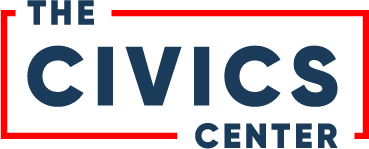A Pennsylvania High School Teacher Shows Us How it’s Done
Last weekend, the Washington Post published an article about high school students in Allentown, PA. Their civics teacher, Shannon Salter, pulls out all the stops on a mission to get them interested in voting. Her students’ reactions are depressing: they care deeply about issues like housing affordability, economic opportunity and equality, but most feel disconnected from candidates and campaigns. Most don’t plan to vote, because they believe it won’t matter.
Ms. Salter does not give up. She plays clips from The West Wing, tells stories about the Civil Rights movement, and even presents her students with data from competing schools that show those students voting. She’s determined to connect her students with the democracy that is supposed to serve them.
Shannon Salter is the model we’d like to see in every high school classroom in America, but instead she’s an isolated figure working alone against powerful tides of post-pandemic cynicism and disengagement.
Photography by Michelle Gustafson from The Washington Post
Imagine a different story: what if Shannon Salter were part of a community of parents, educators, and government officials, welcoming young people into our democracy, like clockwork, year after year? Imagine educators in every high school in America working with their students to develop candidate questionnaires about the issues they care about most, like housing affordability, jobs, health care, climate change, reproductive freedom, gun violence, and equality. Imagine the students in these classes encouraging and assisting their peers to talk, to register, and to vote. Imagine democratic engagement rising as a result.
What else would happen? For starters, 4 million new voters would enter the electorate every. Single. Year. When that happens, candidates and campaigns will start working hard to earn their votes. They will spend time and money listening to new voters’ concerns, and making plans and promises to address them.
Today, unfortunately, candidates and campaigns focus only on “likely voters.” By that, they mean, registered voters with a track record of voting. By definition, that excludes those coming of age who are not yet registered. When these students are excluded from candidate messaging and do not find the issues they care about most featured on the top of candidate agendas, they hear loud and clear that they don’t count.
That’s what Shannon Salter is up against, and it’s why I’m determined to build a system that not only supports her incredible efforts, but ensures every high school in America has more than a single, motivated teacher to bear the burden of turning the tide.
It’s with this vision of empowering educators and students that we created our Future Voter Scorecards: voter registration rates for 18-year-olds on a hyper local level, by school district, city, or county. (Through analysis of voter files and demographic data published by the American Community Survey—the most reliable data there is.) The results allow teens themselves to understand their own voting strength, inequities among counties, age groups, and other categories, and how they can make a difference within their own communities.
The Scorecards themselves don’t automatically produce candidates with whom teens will identify. But when young people register to vote, they make themselves visible to candidates and campaigns. They can end the vicious cycle of candidates ignoring young voters who they assume (wrongly) do not care.
As of mid-February, 2024, only 24% of Pennsylvania’s 18-year-olds were registered to vote. Now we have updated numbers from mid-May. The numbers are going in the right direction, but SLOWLY. As of May 13, only 27% of Pennsylvania’s 18-year-olds are registered.
By comparison, 77% of Pennsylvnians, ages 45 and above are registered. That’s a 50 percentage point difference. That’s a huge, unjustified disparity.
Ms. Salter and her students live in Allentown, in Lehigh County. Allentown is the third most populous city in Pennsylvania, and Lehigh County is the tenth most populous county. Only 22% of 18-year-olds are registered In Lehigh County. In Allentown itself, 14.9% of 18-year-olds are registered. You can see the disparities here. It doesn’t have to be this way.
Ms. Salter and her students deserve the best our democracy has to offer. We dedicate our latest Scorecard to them. Their registrations and their votes won’t fix everything that needs attention in our country, but it’s an important first step. It’s real power. It’s their power. When they use it, our democracy will be stronger for all of us.
* * *
Election Day is four months away. Roughly 160,000 Pennsylvanians are 18 years old today, and 116,000 of them are not registered yet. That doesn’t even count the roughly 53,000 more who will turn 18 in time to vote in November. In Allentown alone, roughly 1,400 18-year-olds are not yet registered.
All of them are old enough to register right now.
